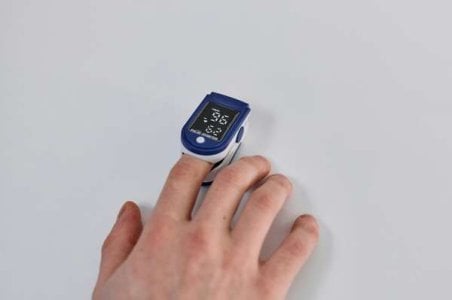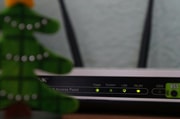Uncover the Truth About Your Resting Heart Rate: Is Your Smartwatch Lying to You Based on Your Age?
By
Danielle F.
- Replies 2
In an age where technology is at our fingertips, or more accurately, on our wrists, the quest for health monitoring has become as simple as a glance at a smartwatch. For our members at the Seniors Discount Club, understanding the nuances of health metrics like resting heart rate (RHR) is crucial, especially as these numbers can be indicative of overall cardiovascular health. But how much trust should we place in these digital guardians of our pulse?
Resting heart rate is the number of times your heart beats per minute when you're at rest. It's a telling sign of your heart's efficiency and overall fitness. A lower RHR typically suggests a heart that's functioning smoothly, without unnecessary strain. However, the question arises: what should your RHR really be at your age, and can you rely on your smartwatch to tell you the truth?
The National Health Service (NHS) suggests that a normal RHR for adults ranges between 60 and 100 beats per minute (bpm). Yet, this is a broad spectrum, and studies have shown that the 'ideal' RHR can vary significantly with age. For instance, research indicates that men in their 50s with an RHR above 75 bpm may have double the risk of dying within the next two decades compared to those with an RHR of 55 bpm or less. Each additional beat per minute could correlate with a 3% higher risk of death, a 1% higher risk of cardiovascular disease, and a 2% increase in the risk of coronary heart disease.
The Centers for Disease Control and Prevention (CDC) in the United States suggests that optimal cardiac fitness is associated with an RHR below 60 bpm, typically between 47 and 57 bpm. This level of fitness is often found in professional athletes and is not as common in the general population.
For seniors, understanding these numbers is particularly important. While an athletic resting heart rate for younger men might range from 40-52 bpm, for men over 65, a healthy RHR might be slightly higher, between 52-55 bpm. Women's RHR tends to be slightly higher, with an athletic 18-to-25-year-old woman having a resting bpm of 40-48, while an athletic woman over 65 might have an RHR of 52-55 bpm.
But what about the readings from your smartwatch? Can they be trusted? While these devices offer convenience and continuous monitoring, they are not without their limitations. Factors such as how tightly the watch is worn, skin tone, tattoos, and even battery life can affect the accuracy of the readings. Darker skin tones and tattoos can absorb more light, interfering with the device's ability to measure heart rate correctly.
Moreover, heart rate variability (HRV), which is the variation in time between heartbeats, is another important metric that some smartwatches track. A high HRV is often considered a sign of a healthy heart, as it indicates the heart's ability to respond to the body's demands. However, HRV naturally declines with age, and what is considered healthy for someone in their 20s may not be the same for someone in their 60s.
For those without smart devices, or for anyone seeking a more traditional method, measuring your pulse manually is a reliable alternative. Simply place your index and middle fingers on the inside of your wrist or on one side of your neck just below the jawline. Count the beats for 60 seconds to find your RHR. Avoid caffeine and nicotine before taking your pulse, as these can temporarily raise your heart rate.
When it comes to exercise, target heart rate (THR) is another metric to consider. It's calculated by subtracting your age from 220 bpm and then determining 50 to 70 percent of this figure. This range helps ensure you're exercising at an optimal level. If you don't have a device to track your THR, the 'talk test' during exercise can be a helpful guide: if you can talk but are breathing more heavily, you're likely at the right pace.

In conclusion, while smartwatches and other devices can be helpful in monitoring heart health, they should not be solely relied upon, especially for those in the over-60s demographic. It's essential to understand the limitations of these devices and to consult with healthcare professionals if there are any concerns. Remember, these gadgets are tools to aid in health awareness, not definitive medical instruments. So, keep an eye on your heart rate, but also keep in touch with your doctor to ensure your ticker is truly ticking just right.
Resting heart rate is the number of times your heart beats per minute when you're at rest. It's a telling sign of your heart's efficiency and overall fitness. A lower RHR typically suggests a heart that's functioning smoothly, without unnecessary strain. However, the question arises: what should your RHR really be at your age, and can you rely on your smartwatch to tell you the truth?
The National Health Service (NHS) suggests that a normal RHR for adults ranges between 60 and 100 beats per minute (bpm). Yet, this is a broad spectrum, and studies have shown that the 'ideal' RHR can vary significantly with age. For instance, research indicates that men in their 50s with an RHR above 75 bpm may have double the risk of dying within the next two decades compared to those with an RHR of 55 bpm or less. Each additional beat per minute could correlate with a 3% higher risk of death, a 1% higher risk of cardiovascular disease, and a 2% increase in the risk of coronary heart disease.
The Centers for Disease Control and Prevention (CDC) in the United States suggests that optimal cardiac fitness is associated with an RHR below 60 bpm, typically between 47 and 57 bpm. This level of fitness is often found in professional athletes and is not as common in the general population.
For seniors, understanding these numbers is particularly important. While an athletic resting heart rate for younger men might range from 40-52 bpm, for men over 65, a healthy RHR might be slightly higher, between 52-55 bpm. Women's RHR tends to be slightly higher, with an athletic 18-to-25-year-old woman having a resting bpm of 40-48, while an athletic woman over 65 might have an RHR of 52-55 bpm.
But what about the readings from your smartwatch? Can they be trusted? While these devices offer convenience and continuous monitoring, they are not without their limitations. Factors such as how tightly the watch is worn, skin tone, tattoos, and even battery life can affect the accuracy of the readings. Darker skin tones and tattoos can absorb more light, interfering with the device's ability to measure heart rate correctly.
Moreover, heart rate variability (HRV), which is the variation in time between heartbeats, is another important metric that some smartwatches track. A high HRV is often considered a sign of a healthy heart, as it indicates the heart's ability to respond to the body's demands. However, HRV naturally declines with age, and what is considered healthy for someone in their 20s may not be the same for someone in their 60s.
For those without smart devices, or for anyone seeking a more traditional method, measuring your pulse manually is a reliable alternative. Simply place your index and middle fingers on the inside of your wrist or on one side of your neck just below the jawline. Count the beats for 60 seconds to find your RHR. Avoid caffeine and nicotine before taking your pulse, as these can temporarily raise your heart rate.
When it comes to exercise, target heart rate (THR) is another metric to consider. It's calculated by subtracting your age from 220 bpm and then determining 50 to 70 percent of this figure. This range helps ensure you're exercising at an optimal level. If you don't have a device to track your THR, the 'talk test' during exercise can be a helpful guide: if you can talk but are breathing more heavily, you're likely at the right pace.
Key Takeaways
- Resting heart rate is a critical health metric that can indicate vulnerability to heart attack, stroke, and lung disease, with a lower rate generally signifying better fitness.
- Ideal resting heart rate varies depending on age and fitness level, with studies suggesting that lower rates are linked to decreased risks of death and cardiovascular diseases.
- Smartwatches and health devices track resting heart rate and heart rate variability, but experts caution against reliance on these measurements alone due to potential inaccuracies and individual variations.
- It's important to consult with a medical professional if you have symptoms of heart problems, and traditional methods like measuring pulse over 60 seconds can provide a reliable resting heart rate reading.
Last edited:








